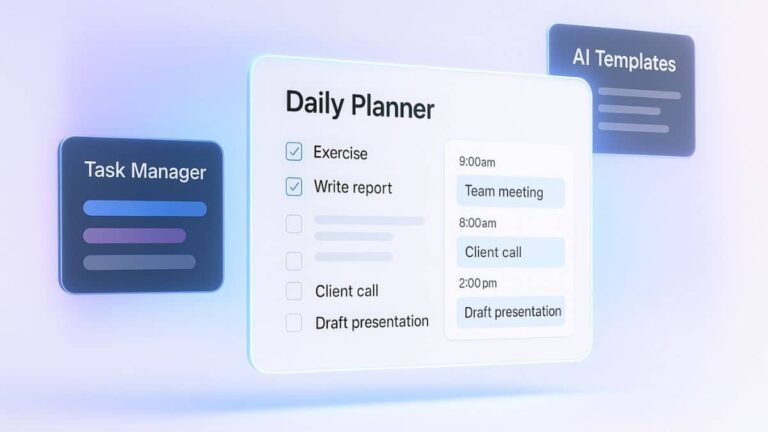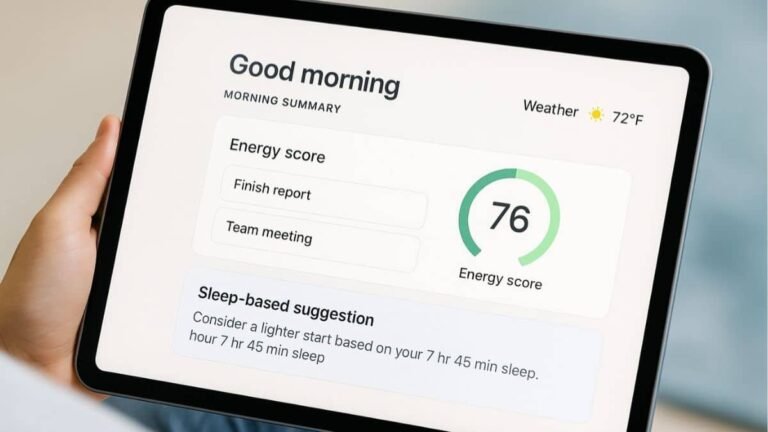Address
251 Little Falls Drive, Wilmington, DE 19808, United States
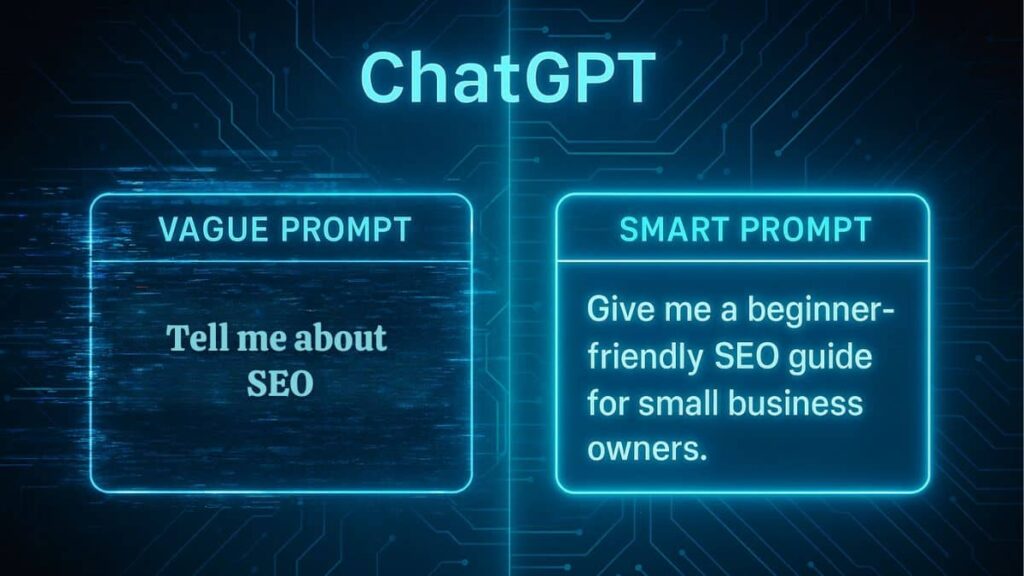
Ever wondered why ChatGPT gives you dull or off-target answers? It’s not the AI, it’s your prompt. If you’re new to using ChatGPT, a few small mistakes can turn powerful potential into pointless replies. In this post, we’ll break down the top ChatGPT mistakes beginners make and how to fix them for sharper, smarter results.
Table of Contents
Why prompt quality matters more than you think
When using ChatGPT, the quality of your input directly affects the quality of your output. Think of it like giving GPS directions: if you’re unclear about your destination, the route won’t make sense. A poorly written or incomplete prompt leads to generic or even irrelevant answers, wasting time and causing frustration.
Want better results? Start by avoiding these common beginner mistakes.
Mistake #1: Being too vague with your request
One of the most frequent missteps is writing prompts like, “Tell me about marketing” or “Explain AI.” These are far too broad. ChatGPT doesn’t know your intent, your audience, or the depth you want.
Real example: Vague prompt vs specific prompt
❌ Vague: “Tell me about SEO”
✅ Better: “Give me a beginner-friendly guide to SEO basics for small business owners”
The more specific you are, the more accurate and valuable the response. Include audience, tone, format, and context when possible.
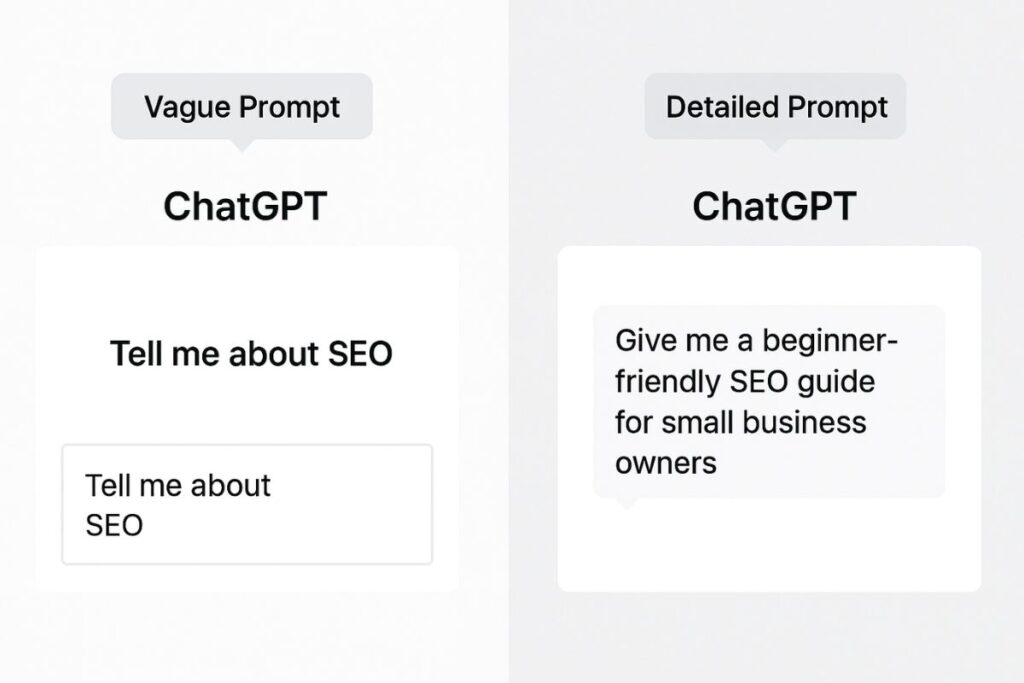
Mistake #2: Ignoring role instructions
ChatGPT works better when you assign it a role. Without guidance, it defaults to being neutral and general. But with role-based instructions, it adapts, instantly.
When “Act like an expert” can make a big difference
Try prompts like:
“Act like a seasoned UX designer and explain why button placement matters.”
Adding role context helps ChatGPT frame its response in the right voice and depth, improving clarity and relevance. If you’re just starting to experiment with prompt engineering or automation workflows, it’s worth taking time to explore essential AI tools for beginners that can amplify your learning curve.
Mistake #3: Overloading the prompt with irrelevant details
More detail isn’t always better. Many users go overboard, adding long-winded background info or unnecessary instructions that dilute the core task.
How too much info confuses the model
If you paste a whole paragraph before your actual question, you risk ChatGPT misunderstanding your intent. Keep background info concise, and get to the point.
Mistake #4: Asking multiple questions at once
Bundling three or four different questions into a single prompt may seem efficient, but it rarely works well. ChatGPT tends to answer only parts, or skips the rest entirely.
Why focused prompts get better results
Instead of asking, “Can you explain SEO, content strategy, and email marketing in one guide?” break it down:
- “Explain the basics of SEO for beginners.”
- “How does a content strategy support SEO goals?”
- “What are best practices for email marketing in 2024?”
This chunking method improves clarity and increases the usefulness of the output.
Mistake #5: Forgetting to specify the format you want
One simple fix that’s often overlooked: tell ChatGPT how to present the answer. Do you want a list? A table? A quick summary? Say it upfront.
Examples: list, table, summary; get what you ask for
Here are a few formatting requests that work great:
- “Summarize this in bullet points”
- “Give me a pros and cons table”
- “List 5 actionable steps I can follow”
This gives structure to the output and saves editing time later on.
Mistake #6: Not iterating or refining after the first response
Many beginners expect a perfect answer on the first try but ChatGPT thrives on interaction. Its real power shines when you treat it like a creative partner, not a vending machine.
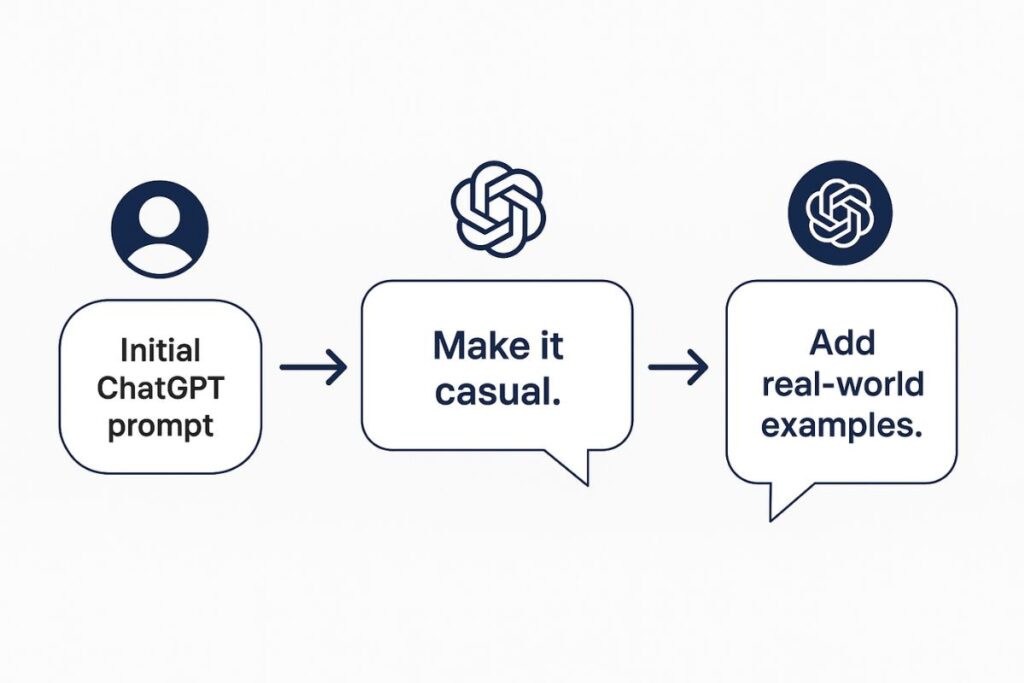
Treat ChatGPT like a creative partner, not a magic answer box
Here’s a smart approach: after the initial response, reply with follow-ups like:
- “Can you make that more casual?”
- “Now give me three real-world examples.”
- “Rewrite this from a manager’s point of view.”
Each round sharpens the output. Even OpenAI recommends iterative prompting to maximize clarity and performance.
Mistake #7: Assuming ChatGPT knows your context
This is a big one. ChatGPT doesn’t remember previous conversations unless you’re in the same session, and even then, it needs cues. It won’t know your goals, your brand tone, or your audience unless you say so.
Set the stage: Background makes all the difference
Instead of jumping in with: “Write me a product description,” add context like:
“Write a playful, one-paragraph product description for a luxury soy candle brand targeting eco-conscious millennial women.”
That extra context transforms the output from bland to brilliant.
Final thoughts
If you’ve felt disappointed with ChatGPT’s responses, it’s probably not the AI’s fault, it’s the prompt. By avoiding these rookie mistakes, you’ll unlock better, faster, and far more useful results.
ChatGPT can be an incredible tool but only if you use it the right way. By avoiding these common mistakes, your prompts become more focused, your responses more useful, and your ChatGPT experience much higher. Try these simple tweaks today and watch your ChatGPT experience improve instantly. Want more AI tips? Don’t forget to explore our other guides!




